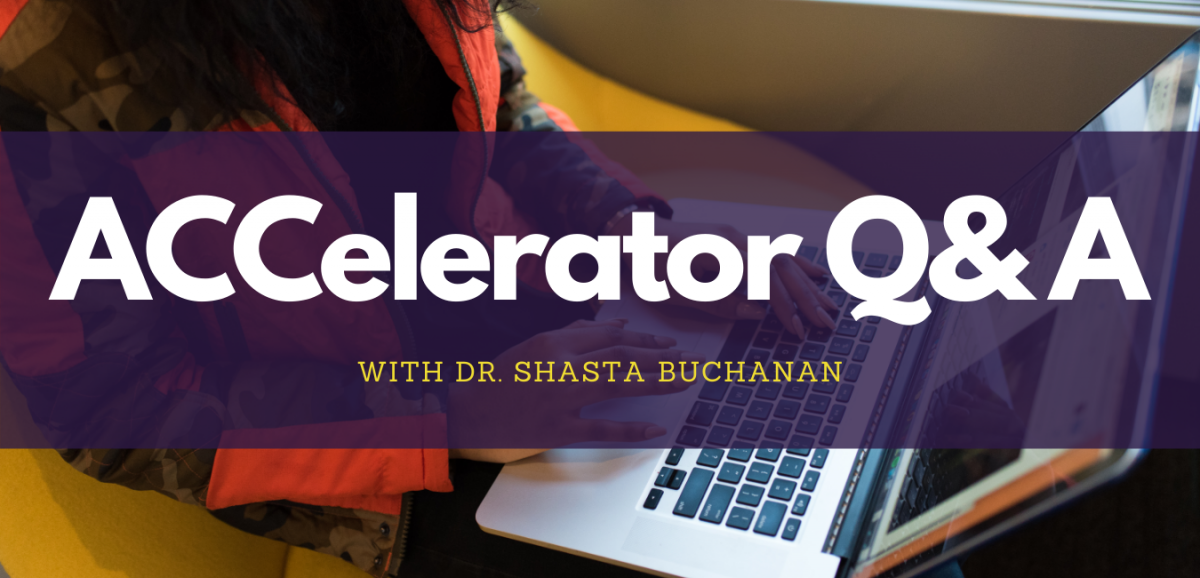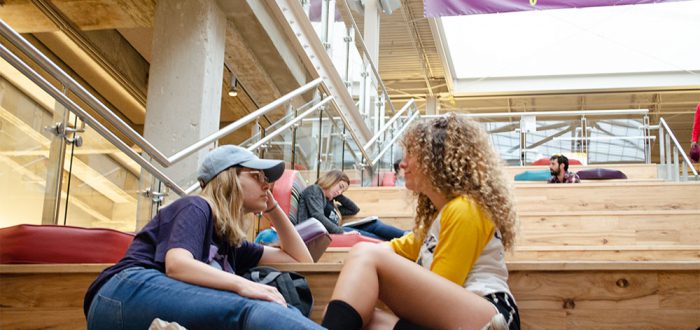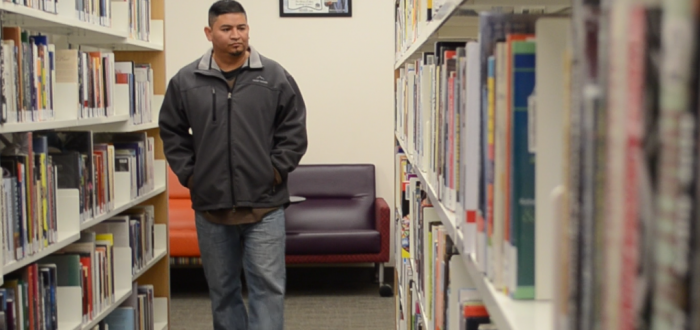Written by Marissa Greene
Austin Community College reopened three locations for students to utilize the ACCelerator. As of Oct. 26, students can schedule an appointment to have a quiet place to study, technology, and internet access. All things necessary for student success during virtual learning.
Q: How have the operating hours changed at the ACCelerator?
A: The operating hours for the ACCelerator are now Monday through Friday from 9 am to 4 pm. We’re on three campuses [the ACCelerator} so the Highland, Round Rock, and the Hays campus library. We want to be mindful of the best use of our facilities as well as being safe.
Q: Are services such as private study rooms open for student use?
A: Not at this time. But that doesn’t mean we won’t start to transition and open those different opportunities. We wanted to start small. We heard from our students in our campaigns in May and one of the things that really was at the top lists for students was a quiet place to study, access to technology, and the internet.
So they have a whole pod to themselves. Now there is a specific space that they have to sit in just to maintain social distancing. But there are no other people in the pods with them. We are also only in a certain zone of the ACCelerator. Again, we know students want this access but we also know that they still want to be safe in that space. So we wanted to be mindful of that before we slowly start to open up other spaces.
Q: What does it look like to walk into the ACCelerator now?
A: Good question! One, it’s a little different because they can’t just walk into the ACCelerator they have the schedule an appointment for a pod space or a space in the Hays library. We also ask all of our students and employees to watch a video. It really walks them through what it is like and what it feels like to walk on campus. Every employee and student has to fill out the ACC health screener app. This allows us to make sure that they are not experiencing any symptoms and we constantly remind our students and staff that there is just a personal responsibility about this and I am just so proud of everyone. And then to wear a face mask, wash your hands, we take your temperature at the door, and then everyone gets something that certifies them that they can be in that space. The student will have two hours of time allotted in their appointment.
Q: How many times can a student use this facility?
A: They can schedule as much as they want but again it is by appointment only. That allows us to maintain the percentage of people that should be in the building between students and employees. And again, it allows us to practice social distancing and follow those protocols that allow students the things we know they need to be successful.
Q: Are tutoring, academic coaching, and other services open at the ACCelerator at this time?
A: The ACCelerator, as we transition to opening it is really what students told us what they needed most. That was a quiet place to study, access to technology, and the internet. So that is all that we are providing at the Highland, Round Rock, and Hays library right now. We will work across the college partners as we’re monitoring the virus and know what’s happening. We want to keep everyone safe, we want to be mindful in terms of what is happening with the virus before we say “okay what is the next thing we can bring into that space?”
I hope that our students understand that we respect them. We want them to be safe. And so, while it may seem slow, slow means that we are being cautious. It doesn’t mean that we aren’t planning for the future; it just means that it is very important for us to be cautious.
Q: How do students make sure their opinions are heard about ACC’s transition?
A: We send surveys out, we cal students, and what I’ve learned is that our students become way more responsive and they’re looking at emails, newsletters, and whatever the different means we’ve been communicating with them. They are very responsive and paying attention because they are wanting to be in the know. So through all of those levels of learning, I hope our students know that we are not just asking questions to ask questions sake. We’re hearing them. And then our plan of action is to plan and prepare. And how do we meet the needs of our students
Q: Any final comments or takeaways?
A: The biggest thing is that if students see emails or other means of communication or they see that we’re calling them, please pick up or call us back. We understand that they are in the class too so sometimes when we call them it might now match when they’re in class. But please to return our call, please respond to our emails because their voice is what we are trying to gather and to know what do you need. And if there is any takeaway, it is that we are trying our best to meet their needs in the virtual and what would come back but we need to hear from them.




